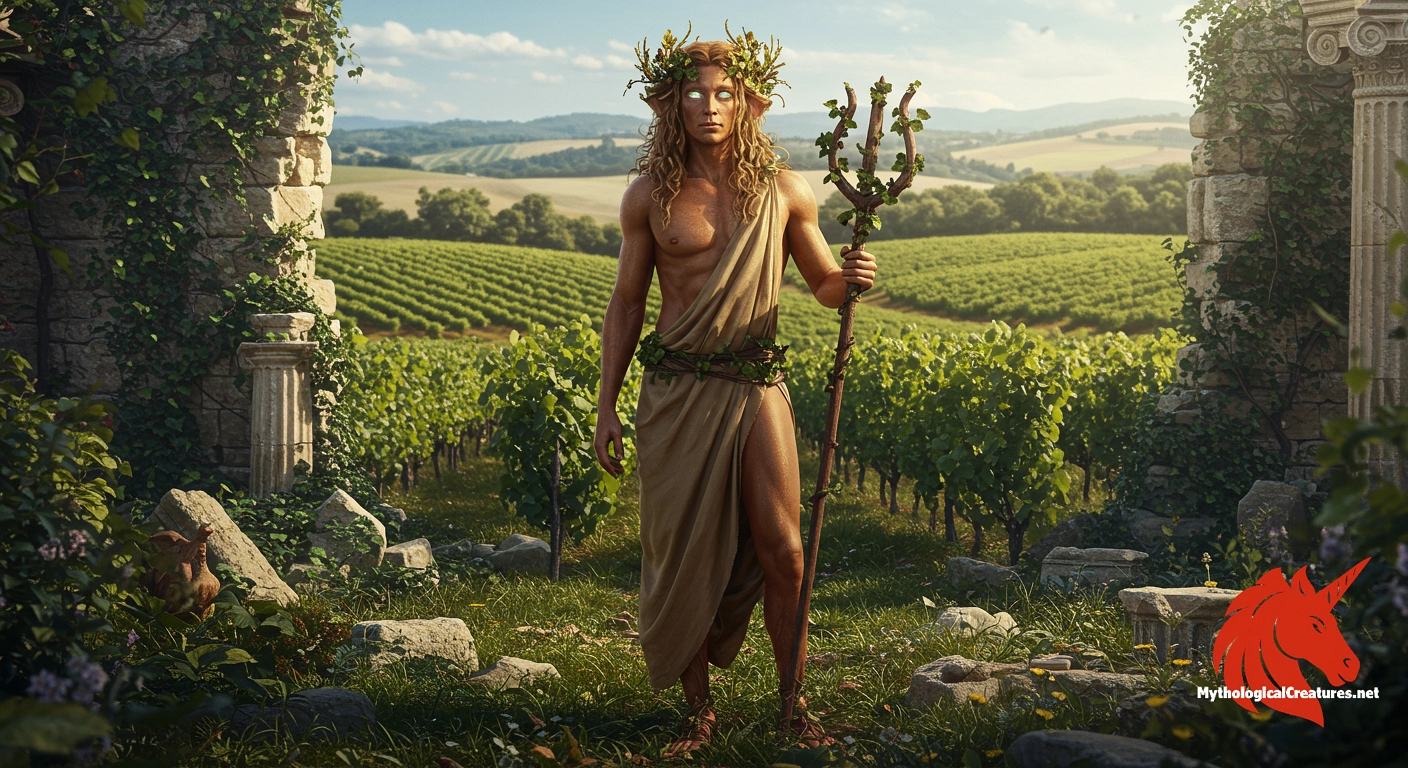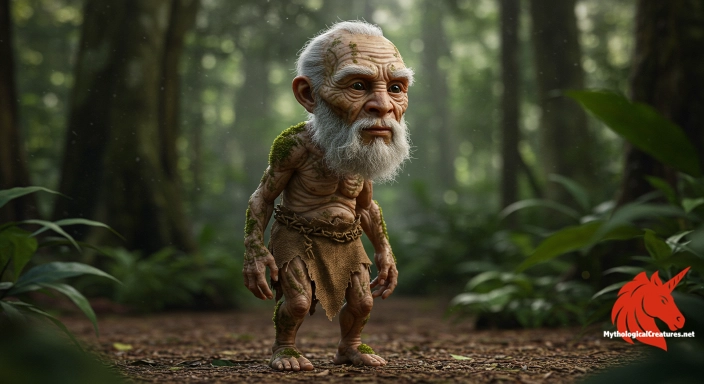Dionysus: Dionysus, also known as Bacchus, is the ancient Greek god of wine, fertility, and theatre.

Dionysus
Dionysus - Dionysus played a crucial role in the development of theatre and was celebrated for his ability to liberate his followers through ecstatic rituals and divine madness.
Origins & First Encounters
Dionysus stands out as one of the most enigmatic and influential figures in ancient Greek religion, embodying the mysteries of wine, theatre, and ecstatic liberation. Born out of a confluence of mortal and divine elements, his origins are shrouded in ambiguity and myth, reflecting the interplay between the earthly and the supernatural. His early attestations appear in classical literature, where he is revered for bringing both joy and chaos to those who encounter him. The god’s character is marked by dualities; he is at once a nurturer of life through fertility and a harbinger of madness and revelry. His association with the vine and the intoxication of wine symbolises a breaking away from the constraints of conventional society. Over time, his cult spread beyond the borders of Greece, adapting to local traditions and imbibing local motifs. Dionysus is also known by the name Bacchus, a testament to his enduring presence in both Greek and Roman cultural narratives. The cultural context surrounding him reveals a deity who not only presides over agricultural bounty but also champions the liberation of the spirit, encouraging his devotees to embrace ecstasy and the irrational. His role in ancient rituals highlights the god’s ability to dissolve boundaries, allowing participation in both life and death, while his presence continues to intrigue and inspire modern interpretations.
Source Texts & Tale Variants
Ancient texts and fragmented narratives offer a rich tapestry through which Dionysus has been understood and reinterpreted across millennia. Various accounts emerge from sources such as the epic works of Hesiod and the tragic dramas of Euripides, each painting a slightly different portrait of the god. In the Orphic tradition, the narrative of his dual birth—the once-born from Zeus alone and the twice-born from Semele—opens avenues for exploring themes of rebirth and transformation. Other literary sources, including the works of Euripides and Apollodorus, recount episodes of divine ecstasy, brutal retribution, and miraculous resurrections tied to the god. These primary texts often emphasise the inherent contradictions in his nature, blending the fertility of the earth with the wild terrains of the underworld. Over the centuries, alternate myths emerged that linked him with chthonic mysteries and the rites of the Eleusinian cults. His identification with the figure Iacchus in the Eleusinian Mysteries further deepened his association with the mysterious cultic practices devoted to the afterlife. Despite the variations, a consistent theme surfaces: Dionysus is a deity who challenges the status quo and offers a passage to transcendence. His myth has been told in multiple versions that each emphasise different aspects of divine madness, ecstatic joy, and sacrificial rebirth, ensuring a lasting legacy in myth and legend.
Form & Powers
Dionysus is traditionally depicted with an otherworldly charm that mirrors his dual nature. He is often shown with a wreath of ivy or grapevines adorning his head, symbolising the vitality and intoxicating influence of wine. His countenance can range from the youthful exuberance of a divine trickster to the more mature, enigmatic visage of a seasoned liberator. In many classical art forms, he is portrayed holding a thyrsus—a staff crafted from a fennel stem and entwined with ivy, sometimes dripping with honey—embodying both benevolence and the potential for wrath. His attire frequently features richly patterned robes and flowing garments that capture the graceful yet unpredictable movement of festivity. Artists through the ages have chosen to emphasize his captivating eyes, which suggest profound understanding and perhaps even a hint of madness beneath his charismatic smile. Variations in his physical imagery also present him accompanied by exotic animals like panthers and leopards, creatures that underscore his connection to the wild and untamed. These representations evolve subtly depending on the artistic medium and regional influences, but the consistent symbols serve as visual shorthand for his power over nature, ecstasy, and the transformative quality of intoxication.
Regional Faces
Regional interpretations of Dionysus illustrate the dynamic adaptability of his myth and cult across diverse cultures and local traditions. In the rugged landscapes of Thrace, he is portrayed more as a raw, elemental force closely tied to nature and the untamed wilderness. Greek regions, particularly those steeped in dramatic traditions, emphasise his role as the patron of theatre and ritual performance, infusing local festivals with elements of celebration and frenzy. When his cult traversed into the Roman world, Dionysus became synonymous with Bacchus, and his festivals evolved into the notorious and vibrant Bacchanalia, which celebrated both the joy and the disruptive spirit of wine. In Asia Minor, local deities often intermingled with Dionysian imagery, resulting in iconography that blended Eastern mysticism with Greek tradition. The adaptations in Egypt and other parts of the Mediterranean further accented his aspects of rejuvenation and life after death, aligning him with the cyclical rhythms of nature. The nuances of his depiction in these regions reveal a god who is at once familiar and otherworldly, capable of absorbing and reflecting the cultural symbolism of each locale. Through these localised adaptations, Dionysus not only maintained his core identity but also embraced a versatility that allowed him to resonate with diverse religious sentiments and practices.
Cultural Parallels
The figure of Dionysus invites intriguing comparisons with deities from various mythological traditions around the world. His emphasis on rebirth and ecstasy finds echoes in the Egyptian god Osiris, who embodies the cycle of death and regeneration. Similar themes can be observed in aspects of the Hindu god Shiva, whose role in cosmic cycles and ecstatic dance aligns with Dionysian rites. The Celtic pantheon also presents parallels, where gods akin to Cernunnos and other nature deities evoke images of fertility, wildness, and the dual nature of creation and destruction. These cross-cultural comparisons underline the shared human fascination with themes of transcendence, transformation, and the ecstasy of dissolution, suggesting that these archetypes speak to universal aspects of the human psyche. While Dionysus is singular in his blend of sublimity and madness, he consistently serves as a bridge between the material and the divine, much as other global deities encourage a breaking of taboos and a celebration of life’s inherent contradictions. His dual status as both a nurturer and a destroyer aligns him with the archetypical hero who embodies paradoxes and radical change. In examining these cultural parallels, one finds that the motifs of intoxication, fertility, and dramatic spectacle are recurring, reinforcing the notion that Dionysus resonates far beyond the classical boundaries of Greek mythology.
Legacy & Modern Evolution
Throughout history, Dionysus has experienced a remarkable evolution in his depiction and cultural resonance. In antiquity, he was celebrated in grand festivals that saw the integration of theatrical performance with communal rites, establishing the foundation for Western drama. Over the centuries, the god’s symbolism has been reinterpreted in various artistic, literary, and philosophical movements, from Renaissance painting to modern psychological theories. His image as the liberator who shatters the confines of conformity and reawakens the primal self has inspired countless artists and writers. In modern times, the Dionysian spirit is often invoked in discussions of creativity, the unconscious, and the need to disrupt societal norms, reflecting a persistent allure in the balance between order and chaos. Contemporary cultural expressions—from film and theatre to music and visual arts—continue to explore his myth, celebrating his capacity to provoke both ecstasy and introspection. The reinterpretation of his myth in modern literature often highlights themes of identity, transformation, and the disintegration of social barriers. Today, Dionysus is not merely a relic of ancient myth but a vibrant symbol of the ongoing human quest for freedom, emotional intensity, and the unrestrained celebration of life.
Interesting Fact
An intriguing aspect of Dionysus's myth is his dual identity as both a liberator and a catalyst for chaos, reflecting the eternal balance between order and ecstasy in human experience.
Quick Creature Info
Origin:
Associations:
Our Mythic Legendary Rating:

Also Sometimes Known As:
Habitat:
Supernatural Powers:
Physical Attributes:
Abilities:
Behavior:
Lore:
References
Discover Another Mythical Legend You May Not Have Heard Of?
Uncover the mysteries of ancient folklore and expand your knowledge of legendary beings from cultures around the world.
Dare to Meet the Nuno sa punso....
Mythical Disclaimer: The images and data on this site are derived from various historical and literary sources, but we have found that many myths often have multiple versions and interpretations across references, sometimes contradictory. As a result, these creature depictions are artistic interpretations—imaginative blends of folklore, legend, and a dash of AI guesswork. Because creature descriptions vary widely, our illustrations and accompanying information represent our best effort to honor mythology while bridging creative gaps. Enjoy these interpretations—just remember, we've done our best to respect the stories and validate available data, but in the realm of mythology, details often shift, imagination leads the way, and nothing is ever set in stone!
Curated by the Mythological Creatures Team (rev. May 2025)
